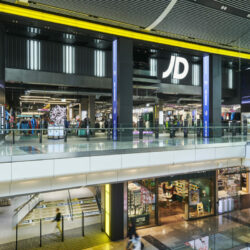The glorious summer of 2013 ushered hands to pockets, providing a much needed national morale and economic boost. In a sun-fuelled frenzy we re-stocked our wardrobes with new outfits and stuffed our fridges with food and drink for the barbeque. By Autumn, the Office for National Statistics (ONS) reported that retail sales rose three per cent compared with 12 months ago, the fastest annual rise since January 2011.
However, while a collective sigh of relief has been breathed across the sector, retailers must acknowledge that the consumer world emerging from the darkness is greatly altered from the one that entered the downturn.
A brave new consumer world
This reality is demonstrated clearly on the UK High Street. The recession coincided with the rise of online shopping, facilitated by the arrival of smartphones and affordable, quick broadband internet. Coupled with the long term trend of consumer convenience, buyer behaviour was changed forever as the recession enveloped the Western world.
The UK High Street has felt the full force of this consumer behaviour revolution. To survive, stores must ensure they meet the expectations of post-recession shoppers, or risk being plunged back into financial uncertainty. We now have a little more spare change in our wallets, but it‘s not clear that it will make a smooth transition into High Street tills. Retailers and brands must realise that consumers‘ expectations have changed – we are now a nation of informed, tech-savvy shoppers and we expect to get more out of our shopping experience. Friendly employees and clean aisles are no longer sufficient to keep customers happy as Marks & Spencer and other flagship retail brands are discovering.
Omni-channel retail (a term applied to a consumer‘s ability to buy from a single retailer in a variety of ways) is an essential concept all retailers hoping for a successful 2014 must grasp. Rather than viewing e-retail as the enemy or a separate business arm, traditional retailers (with a physical history) must ensure their in-store strategy complements their digital offerings, and vice versa. Shoppers, armed with multiple tech devices, expect a seamless brand experience across all mediums. While the fearful see danger, the optimistic will recognise omni-channel presents an opportunity to increase customer engagement and build long-term loyalty.
Wi-Fi or die
By integrating the benefits of the online experience into the in-store experience, High Street retailers too can capture some of the benefits of the current recovery. One place that the High Street can start the fight back is by installing free Wi-Fi in stores. In many countries, particularly in less affluent regions such as Africa and Eastern Europe, free accessible Wi-Fi is an ever present in shops, cafes and bars. The UK is comparatively backward, especially on the High Street. While brands associate Wi-Fi with the haunting spectre of e-retail, the new generation of shoppers do not distinguish between digital and physical. SMG‘s research shows that nearly 50 per cent of shoppers under 18 are ‘pre-shopping‘ (browsing) online before purchasing in-store, with successful pre-shoppers spending 15 per cent more in-store.
Retail‘s continued uncertainty over the use of the internet has been highlighted by the rise of ‘showrooming‘, where shoppers browse products in-store before using their mobiles to compare prices on rivals‘ sites. Concerned retailers recoiled when data emerged suggesting a quarter of Christmas 2012 shoppers had ‘showroomed‘, with 40 per cent of those going on to purchase elsewhere.
The key, however, is not to run away from the problem but confront it head on. Mobile shopping is here to stay. Yes, it opens the door to price comparison, but ultimately the rewards for building a seamless digital-physical experience far out way the negatives. The internet is now a key weapon in creating
RELATED STORIES

















